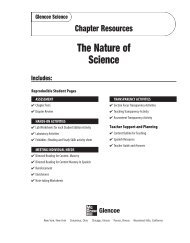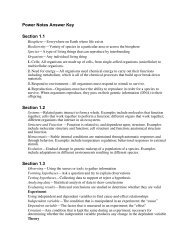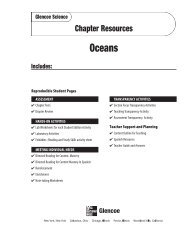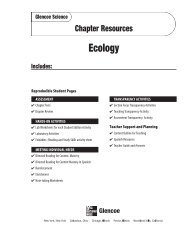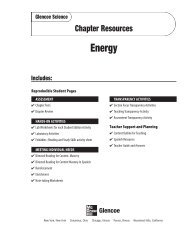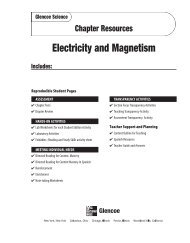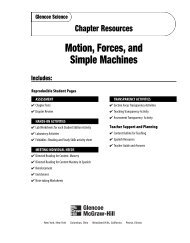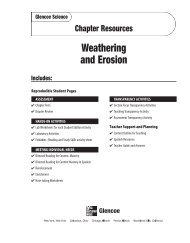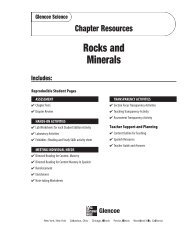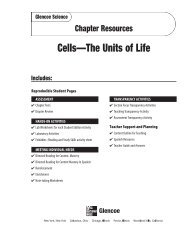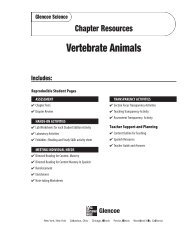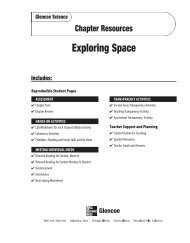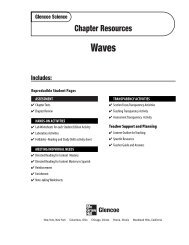Content Outline for Teaching - Potosi School District - Home
Content Outline for Teaching - Potosi School District - Home
Content Outline for Teaching - Potosi School District - Home
Create successful ePaper yourself
Turn your PDF publications into a flip-book with our unique Google optimized e-Paper software.
15<br />
Section 1<br />
<strong>Content</strong> <strong>Outline</strong><br />
<strong>for</strong> <strong>Teaching</strong><br />
Earth’s Place in Space<br />
The Solar System<br />
and Beyond<br />
Underlined words and<br />
phrases are to be filled<br />
in by students on the<br />
Note-taking Worksheet.<br />
A. Earth moves,even though it appears that the Sun does.<br />
1. Rotation—spinning of Earth on its axis,which occurs once every 24 hours<br />
2. Earth moves around the Sun in a regular, curved path called an orbit.<br />
3. It takes one year <strong>for</strong> Earth’s revolution around the Sun.<br />
4. Seasons occur due to Earth’s tilted axis and its revolution around the Sun.<br />
B. The Moon revolves around Earth every 27.3 days.<br />
1. The Moon’s changing shapes are known as phases of the Moon.<br />
2. The Moon’s phases are caused by the position of Earth, the Moon, and the Sun.<br />
a. When the Moon changes from new to full, it is called waxing.<br />
b. When the Moon changes from full to new, it is called waning.<br />
3. A solar eclipse occurs when the Moon is between the Sun and Earth and the<br />
Moon’s shadow falls on Earth<br />
4. A lunar eclipse occurs when Earth is between the Moon and the Sun and<br />
Earth’s shadow falls on the Moon.<br />
Discussion Question<br />
How do lunar and solar eclipses differ? In a lunar eclipse Earth’s shadow falls on the Moon;<br />
in a solar eclipse the Moon’s shadow falls on Earth.<br />
The Solar System and Beyond 47




